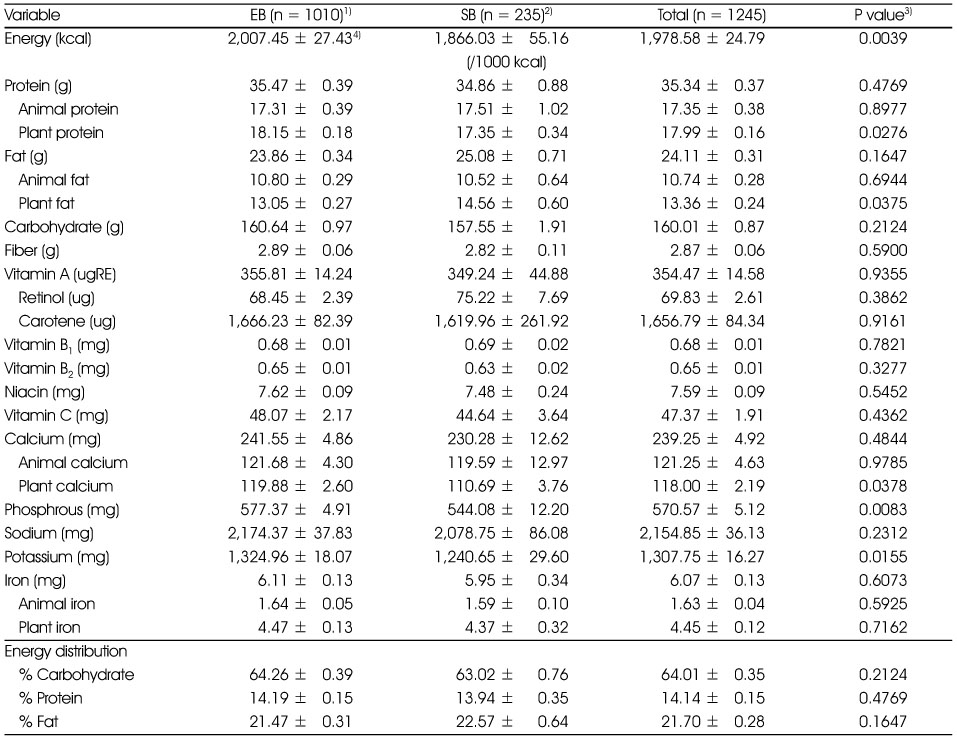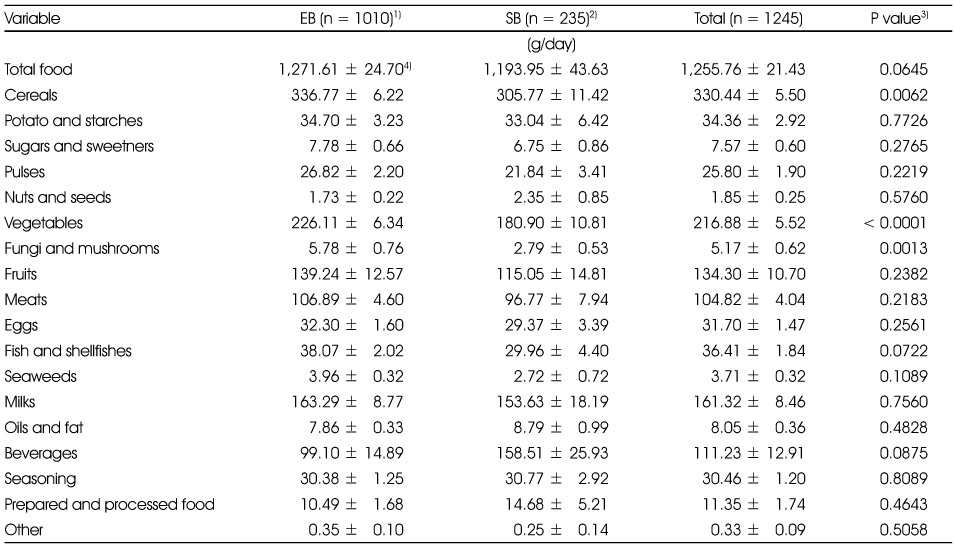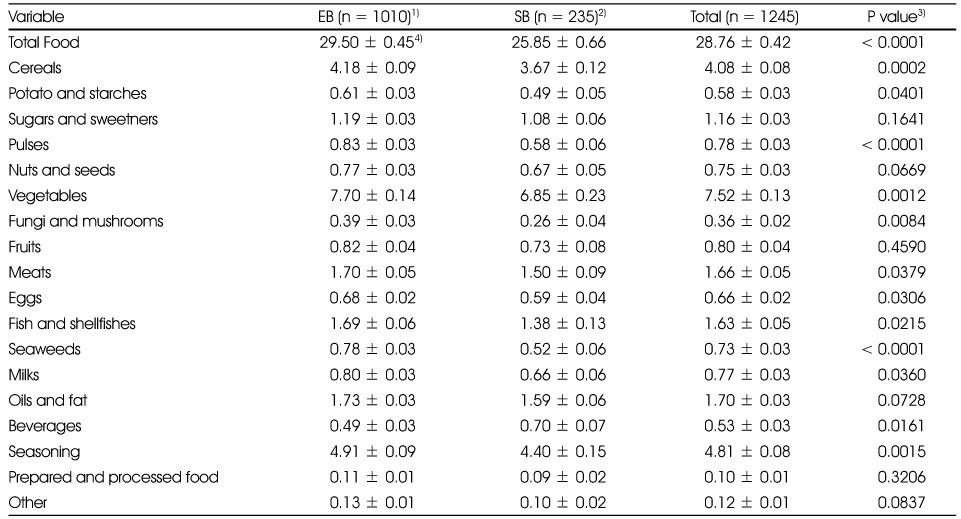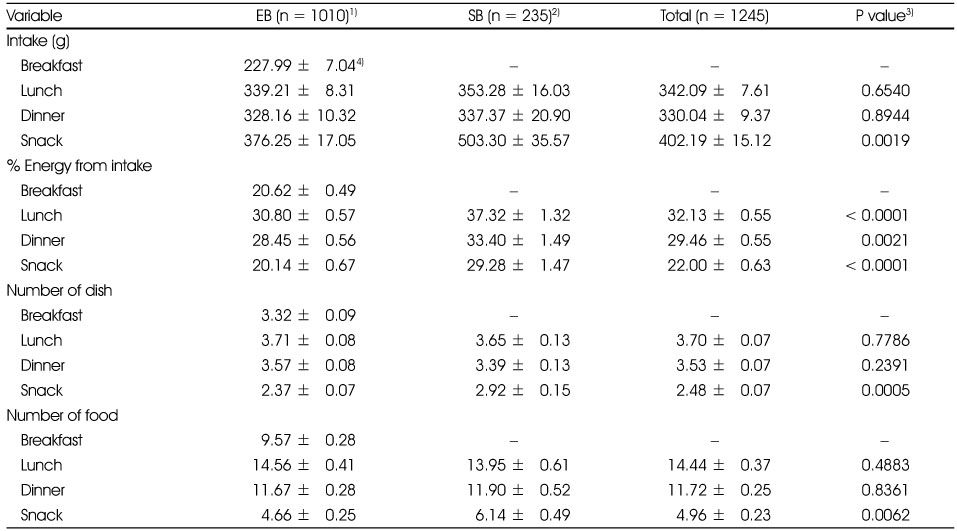References
1. Farshchi HR, Taylor MA, Macdonald IA. Deleterious effects of omitting breakfast on insulin sensitivity and fasting lipid profiles in healthy lean women. Am J Clin Nutr 2005;81(2):388–396.
2. Fernandez Morales I, Aguilar Vilas MV, Mateos Vega CJ, Martinez Para MC. Breakfast quality and its relationship to the prevalence of overweight and obesity in adolescents in Guadalajara (Spain). Nutr Hosp 2011;26(5):952–958.
3. Freitas Junior IF, Christofaro DG, Codogno JS, Monteiro PA, Silveira LS, Fernandes RA. The association between skipping breakfast and biochemical variables in sedentary obese children and adolescents. J Pediatr 2012;161(5):871–874.
4. Gibson EL, Wardle J, Watts CJ. Fruit and vegetable consumption, nutritional knowledge and beliefs in mothers and children. Appetite 1998;31(2):205–228.
5. Kang MH, CHoi MK, Kim MH. Evaluation of energy and nutrient intake as well as dietary behaviors in elementary school and middle school students residing in Chungnam according to breakfast eating status. J Korean Diet Assoc 2011;17(1):18–31.
6. Kim BR, Kim YS. Dietary behaviors, body satisfaction and factors affecting the weight control interest according to gender of middle school students in Wonju area. J Korean Soc Food Sci Nutr 2010a;39(9):1295–1304.
7. Kim MH. Eating habit, body image, and weight control behavior by BMI in Korean female high school students- using Korea youth risk behavior web-based survey 2010 data. Korean J Food Nutr 2012;25(3):579–589.
8. Kim MJ, Kim YM. Dietary habits, nutrition knowledge and dietary behaviors of the 3rd grade elementary school students in Ulsan area by sex and skipping breakfast. J East Asian Soc Diet Life 2010b;20(2):209–217.
9. Kim YJ, Lee JG, Yi YH, Lee SY, Jung DW, Park SK, Cho YH. The influence of breakfast size to metabolic risk factors. J Life Sci 2010;20(12):1812–1819.
10. Korea Centers for Disease Control and Prevention & The Korean Pediatric Society. Body growth standard values of Korean pediatrics and juveniles in 2007 Seoul: 2007.
11. Krebs-Smith SM, Smiciklas-Wright H, Guthrie HA, Krebs-Smith J. The effects of variety in food choices on dietary quality. J Am Diet Assoc 1987;87(7):897–903.
12. Kyriazis I, Rekleiti M, Saridi M, Beliotis E, Toska A, Souliotis K, Wozniak G. Prevalence of obesity in children aged 6-12 years in Greece: nutritional behaviour and physical activity. Arch Med Sci 2012;8(5):859–864.
13. Lee JE, Ahn Y, Kimm K, Park C. Study on the associations of dietary variety and nutrition intake level by the number of survey days. Korean J Nutr 2004;37(10):908–916.
14. Ministry of Health and Welfare & Korea Center for Disease Control and Prevention. Korea health statistics 2010, Korea National Health and Nutrition Examination Survey (KNHANES V-1) Seoul: 2011.
15. Mirmiran P, Azadbakht L, Esmaillzadeh A, Azizi F. Dietary diversity score in adolescents- a good indicator of the nutritional adequacy of diets: Tehran lipid and glucose study. Asia Pac J Clin Nutr 2004;13(1):56–60.
16. Mushtaq MU, Gull S, Mushtaq K, Shahid U, Shad MA, Akram J. Dietary behaviors, physical activity and sedentary lifestyle associated with overweight and obesity, and their sociodemographic correlates, among Pakistani primary school children. Int J Behav Nutr Phys Act 2011;8:130.
17. Park HK, Hong H, Lee JS, Kim JY. A study on the dietary habits and health consciousness of high school students in Seoul. Korean J Nutr 2010;43(4):395–403.
18. Ruxton CH, Kirk TR. Breakfast; a review of associations with measures of dietary intake, physiology and biochemistry. Br J Nutr 1997;78(2):199–213.
19. Savige G, Macfarlane A, Ball K, Worsley A, Crawford D. Snacking behaviours of adolescents and their association with skipping meals. Int J Behav Nutr Phys Act 2007;4:36.
20. Shim JE, Paik HY, Moon HK. Breakfast consumption pattern, diet quality and health outcomes in adults from 2001 national health and nutrition survey. Korean J Nutr 2007;40(5):451–462.
21. Sese MA, Jimenez-Pavon D, Gilbert CC, Gonzalez-Gross M, Gottrand F, de Henauw S, Breidenassel C, Warnberg J, Widhalm K, Molnar D, Manios Y, Cuenca-Garcia M, Kafatos A, Moreno LA. HELENA Study Group. Eating behaviour, insulin resistance and cluster of metabolic risk factors in European adolescents. The HELENA study. Appetite 2012;59(1):140–147.
22. Sjoberg A, Hallberg L, Hoglund D, Hulthen L. Meal pattern, food choice, nutrient intake and lifestyle factors in the Goteborg adolescence study. Eur J Clin Nutr 2003;57(12):1569–1578.
23. Smith KJ, Gall SL, McNaughton SA, Blizzard L, Dwyer T, Venn AJ. Skipping breakfast: longitudinal associations with cardiometabolic risk factors in the childhood determinants of adult health study. Am J Clin Nutr 2010;92(6):1316–1325.
24. Timlin MT, Pereira MA. Breakfast frequency and quality in the etiology of adult obesity and chronic diseases. Nutr Rev 2007;65(6 Pt 1):268–281.
25. Tin SP, Ho SY, Mak KH, Wan KL, Lam TH. Breakfast skipping and change in body mass index in young children. Int J Obes (Lond) 2011;35(7):899–906.
26. Yeoh YJ, Yoon J, Shim JE. Relation of breakfast intake to diet quality in Korean school-aged children: analysis of the data from the 2001 national health and nutrition survey. Korean J Community Nutr 2009;14(1):1–11.








